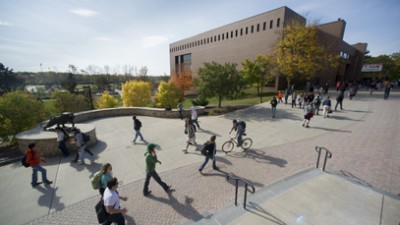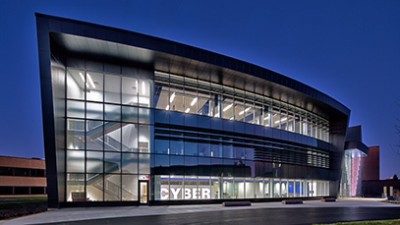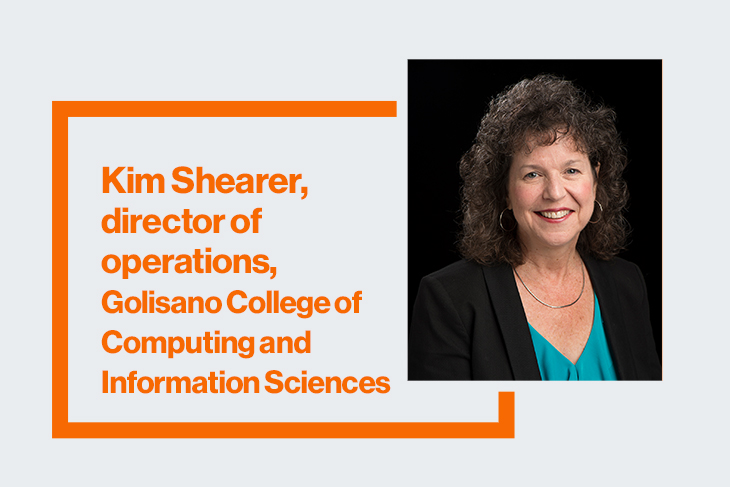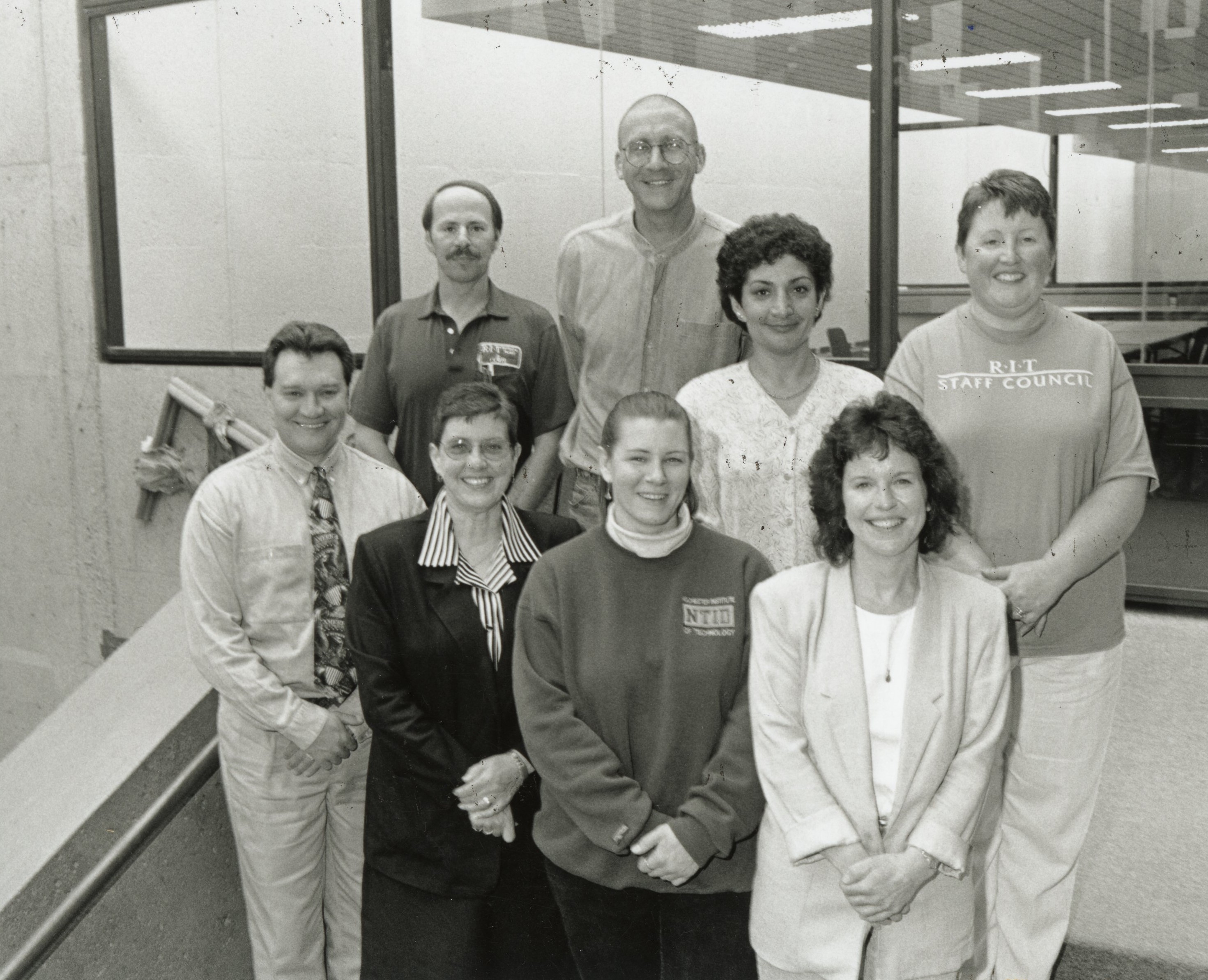Kim Shearer’s passion for planning spans five decades at RIT
Shearer, director of operations at GCCIS, retires in June
RIT
Kim Shearer, director of operations at GCCIS, is retiring after five decades at RIT. Her work has crisscrossed across the university.
When Kim Shearer began working at RIT in 1983, she was asked why she chose the university for her career.
“I responded that I was interested in the free tuition for my children,” said Shearer. “When asked how many kids I had, I replied—‘none, but I’m planning on it.’”
Shearer’s proclivity and proficiency for planning ahead led to roles in the College of Applied Science and Technology and the inception of RIT’s computing college, where she served as the inaugural director of operations at Golisano College of Computing and Information Sciences.
Following the plan, Shearer took a couple of years away from RIT to raise her kids. Two of her sons graduated from RIT. And she did too—completing an applied arts and sciences degree (now called the individualized program) in 2012.
“I love so many things about RIT—the people, its progressive thinking, and the belief that we can accomplish anything,” said Shearer, who will retire in June.
Below are some reflections Shearer shared about her career at RIT.
What are some of your best memories from creating a new college at RIT?
When our journey began in the beautiful new GCCIS facility in 2003, we had 2,990 students and generated 14,432 credit hours that fall. Comparatively, today we have 4,561 students and generated 34,468 credit hours this past fall.
In the beginning, I assisted with furniture selection for all the faculty offices and we’ve now had more than 20 major renovations that have kept our building fresh. I take great pride in making the building look nice and have some warm touches too.
For example, the planters in the GCCIS atrium were originally in the Student Alumni Union and were made by Harry Bertoia, a famous Italian artist. Our contractors had their work cut out for them. They had to design a turntable in the base of each planter that was sturdy enough to hold our large trees and allow us to turn the trees to get an equal amount of sunlight from the windows on the east.
What are you proud of from your time at RIT?
RIT Archives
Kim Shearer, bottom right, with members of the 1999-2000 Staff Council executive committee.
I was fortunate to be elected as chair of RIT’s Staff Council. During that time, we were able to expand the role of the Ombuds Office to provide service to faculty and staff and not just students. We also helped create an incremental customer service position to assist end users with implementation of the new Oracle system. I was so fortunate to receive the prestigious RIT Staff Recognition Award based on that work.
I was also really proud to revamp and develop new unconscious bias training for the university’s faculty search committees. At first, I just volunteered to do it for GCCIS, but people liked it so much that they asked me to train other colleges. I felt really passionate about that because I grew up in a town with little diversity. When I got to RIT I recognized the value of that and wanted to share that with others. We later received the Changing Hearts and Minds Award for our work in diversifying the faculty in GCCIS.
Are there any special features at RIT that people should pay attention to?
I am very proud to have served as co-project manager on the design and build of the ESL Global Cybersecurity Institute wing of GCCIS. That building has some unique stories to tell.
The overhead lights on the bridges connecting the new wing to the main GCCIS facility are binary codes: “R” is on the first floor, “I” is on the second, and “T” is on the third.
Also, there is an embedded message in the three-story orange backlit binary wall to the right of the main entrance. Take some time to try and decipher it. We came up with the message just to add some fun to a building that will be here for a long time.











